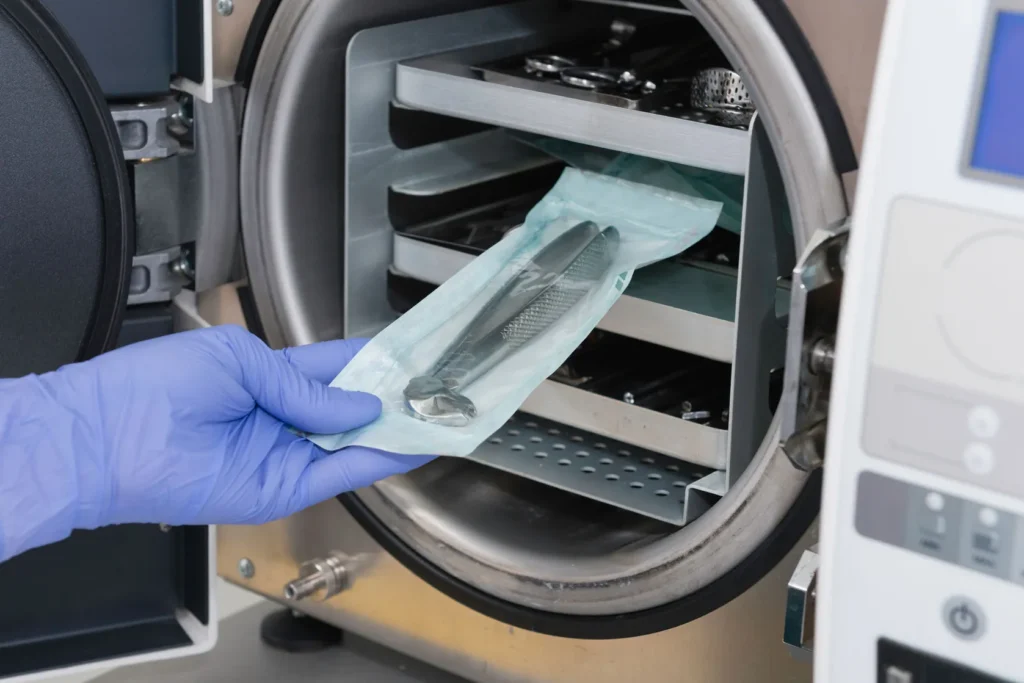Learn through our guide to maintaining and caring for surgical instruments with our expert best practices. Ensure your surgical tools’ longevity and optimal performance through proper handling, cleaning, and storage. Elevate your healthcare facility’s standards with comprehensive insights into instrument care for enhanced precision and patient safety. Explore industry-recommended techniques to extend the lifespan of surgical instruments and uphold the highest hygiene standards. Trust in our resources to empower healthcare professionals with the knowledge needed for effective surgical instrument maintenance.
Why Cleaning and Care of Surgical Instruments is Important?
Cleaning and care of surgical instruments are important for many reasons. First and foremost, proper cleaning helps prevent the transmission of infections between patients, ensuring a sterile surgical environment. Effective cleaning also extends the lifespan of the instruments, preserving their functionality and reducing the need for frequent replacements. Thorough care prevents corrosion and damage, maintaining the precision and integrity of the tools. Further, thorough cleaning contributes to the accuracy of surgical procedures, as any residue or contaminants on instruments could compromise patient safety. In short, the importance of cleaning and care in surgical instrument management lies in protecting patient well-being and investing in high-quality medical equipment.
What is the proper care and proper handling of surgical instruments?
Ensuring the longevity of your surgical instruments depends on care and handling. Following a designated cleaning process after each procedure is necessary to preserve their properties, especially for stainless steel surgical instruments and dental tools. While stainless steel is considered optimal, it is not entirely corrosion-resistant. The cleaning and sanitizing procedures for surgical instruments have become more intricate with advancements, underscoring the need for delicate handling to maintain these instruments.
Tools like Dental Excavators, Burnishers, Filling Instruments, and Spatulas need more care and maintenance. These surgical instruments are used for various dental procedures, ensuring accuracy and efficiency. Each tool is essential, from excavating decayed areas to smoothing surfaces and precise filling. Invest in quality instruments to enhance your dental procedures, providing optimal patient care and achieving superior results in every step of the dental process.
Simple Care Tips for Maintaining Surgical Instruments
Here are some easy tips for taking care of and cleaning your surgical tools:
- Right after using them, clean and dry your surgical instruments to prevent staining. Use warm or cool distilled water with a pH below 10. Dry them well to avoid corrosion and water spots. For tools like forceps and scissors, dry them in an open position. Store them in dry areas.
- Use instruments only for their intended purpose. Incorrect use can damage them and cause frustration and delays in the operating room.
- Avoid putting instruments in saline or harsh solutions, as long-term exposure can lead to corrosion and shorten their lifespan.
- Use a softer brush for manual cleaning, focusing on hard-to-reach areas and moving parts. Avoid steel or wire brushes, as they can damage the instruments.
- Before autoclaving, lubricate instruments with metal-to-metal action using surgical instrument lubricants, not WD-40 or industrial lubricants. Sterilize scissors and needle holders in an open position.
- Don’t lock instruments during autoclaving to ensure steam reaches and sterilizes metal-to-metal surfaces.
- Ultrasonic cleaning is effective. The vibrations create bubbles that remove grime. Aim for 5-10 minutes of exposure time.
Protecting Precision: Best Practices in Sterilizing Surgical Instruments
Sterilization is necessary to ensure the optimal care of surgical instruments. Utilizing proper sterilization techniques not only protects against the spread of infections but also preserves the functionality of delicate tools for medical procedures. Autoclaving, a widely employed method, involves subjecting instruments like forceps, scissors, and needle holders to high-pressure steam. This process kills bacteria, viruses, and other microorganisms, creating a hygienic surgical environment.

In addition to autoclaving, other sterilization methods, such as ethylene oxide gas and hydrogen peroxide plasma, can be used for instruments sensitive to heat and moisture. Regularly sterilizing instruments after each use is essential, preventing the accumulation of contaminants and ensuring that the tools remain clean for the next procedures. By applying these sterilization practices to the care routine, healthcare professionals can uphold the highest standards of cleanliness and reliability in their surgical instruments, ultimately promoting patient safety and successful medical interventions.
What is the process of cleaning of surgical instruments?
Cleaning and sterilizing surgical instruments involves some steps to ensure optimal performance and prevent the spread of infections. Firstly, immediate cleaning with warm or cool distilled water and a pH-balanced solution is required to remove visible debris. Using a soft brush, focus on hard-to-reach areas and moving parts, avoiding abrasive tools that can damage the instruments. Once cleaned, thorough drying is essential to prevent corrosion and water spots.
After cleaning, the instruments undergo sterilization, often through autoclaving. Autoclaves use high-pressure steam to effectively eliminate bacteria, viruses, and other microorganisms. Ensure instruments are sterilized in an open position, allowing steam to reach all surfaces. Alternative sterilization methods like ethylene oxide gas or hydrogen peroxide plasma may be employed for delicate tools sensitive to heat and moisture. Regular compliance with these steps guarantees a hygienic surgical environment and prolongs the life and efficacy of surgical instruments.

